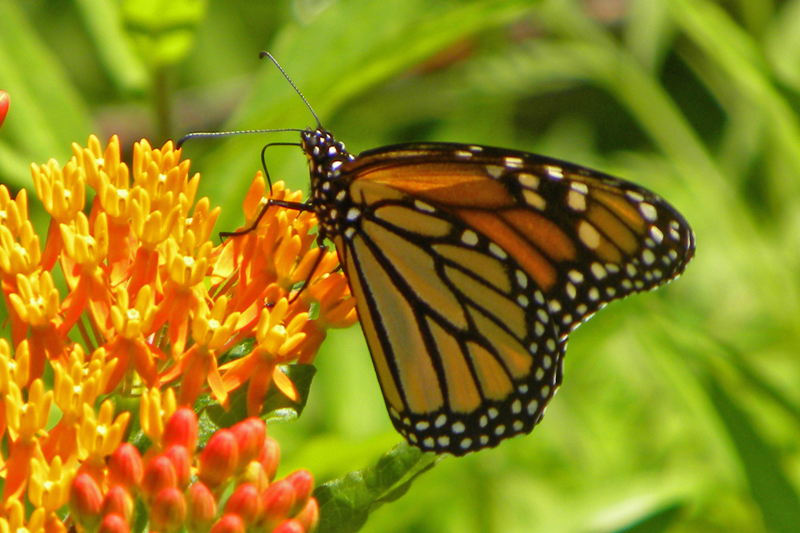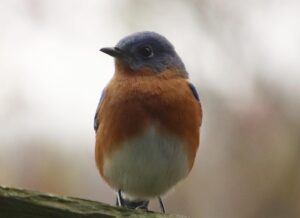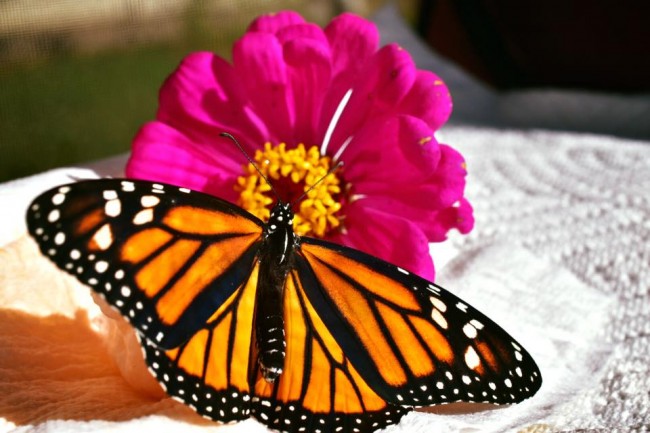
As if Executive Director Tavia Cathcart Brown weren’t busy enough to begin with at the Nature Preserve, she has now become a Monarch butterfly Mama! Her interest in flowers extends to an extensive garden at her home, including lots of the milkweed required for the life cycle of Monarch butterflies. Monarch butterflies only lay their eggs on milkweed, and caterpillars only eat milkweed. But humans don’t seem to like milkweed very much and are cutting it down for various reasons. Sometimes humans cut down milkweed in order to build houses, buildings and streets. Sometimes the milkweed is cut down when trees are removed to harvest the wood. In recent years there have been a lot of wildfires that have destroyed a lot of milkweed. Humans cut milkweed down in their own yards because it doesn’t smell very good or they think it is a weed. But these humans don’t realize that monarch butterflies need the milkweed in order to survive, and the monarch butterfly population is dwindling. Did you know the Nature Preserve is a certified Monarch Waystation, participating in the efforts of Monarch Watch to preserve these beautiful insects?

When she started finding Monarch caterpillars in her milkweed, she couldn’t resist the urge to give them a little help. Monarch butterflies go through four stages during one life cycle, and through four generations in one year. The four stages of the monarch butterfly life cycle are the egg, the larvae (caterpillar), the pupa (chrysalis), and the adult butterfly. The four generations are actually four different butterflies going through these four stages during one year until it is time to start over again with stage one and generation one. The fourth generation of monarch butterflies is a little bit different than the first three generations. The fourth generation is born in September and October and goes through exactly the same process as the first, second and third generations except for one part. The fourth generation of monarch butterflies does not die after two to six weeks. Instead, this generation of monarch butterflies migrates to warmer climates like Mexico and California and will live for six to eight months until it is time to start the whole process over again.
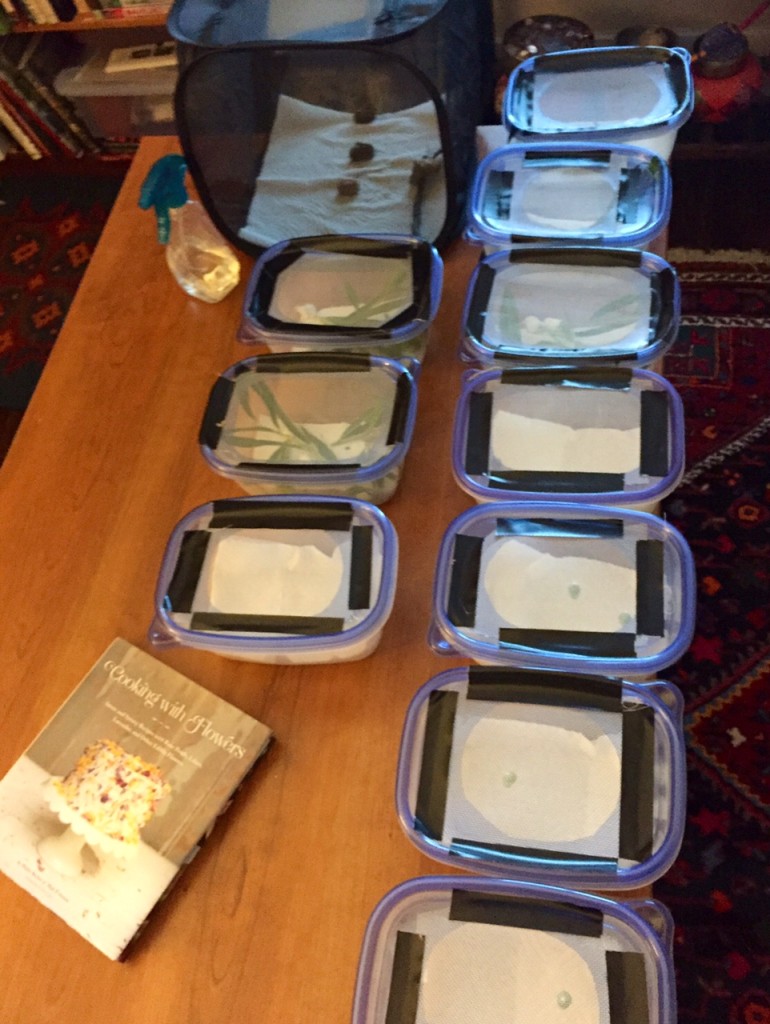
She and husband Matt created a Monarch nursery with plastic containers and screen to provide a safe place for these caterpillars to turn into butterflies.
First, the caterpillar hangs upside down by its feet in the “J” position. Then its skin starts to split…
After a while, the skin is discarded and a green chrysalis develops, while the caterpillar turns into DNA soup as the metamorphosis continues.
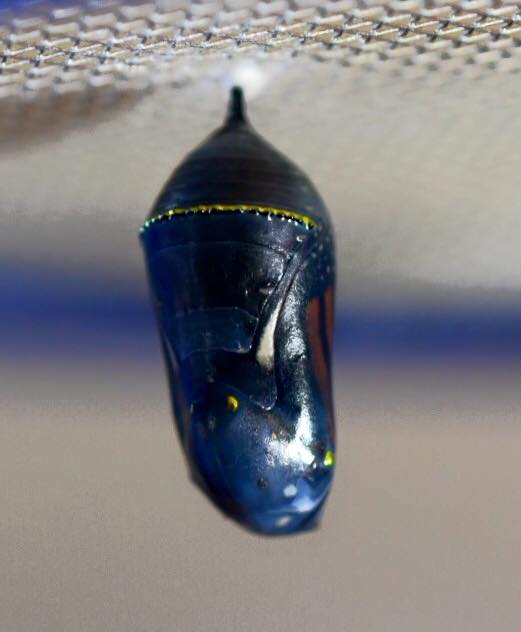
10 – 14 days later, the green chrysalis begins to turn dark, and then translucent so you can actually see the orange and black of the developing wings.
When the chrysalis becomes clear, the butterfly is ready to emerge, but the wings are small and crumpled after their confinement in the small chrysalis.
Watch carefully and you can see the abdomen pulsing gently as it pumps fluids into the wings so they will spread and become firm enough to fly. This has been a fascinating experience for Tavia, and she wanted to share it with all of you. She still has some chrysalis which are getting ready to emerge, and they will be at the Nature Center on Wednesday, Sept. 16 from 9 – 1 if you can come by.

